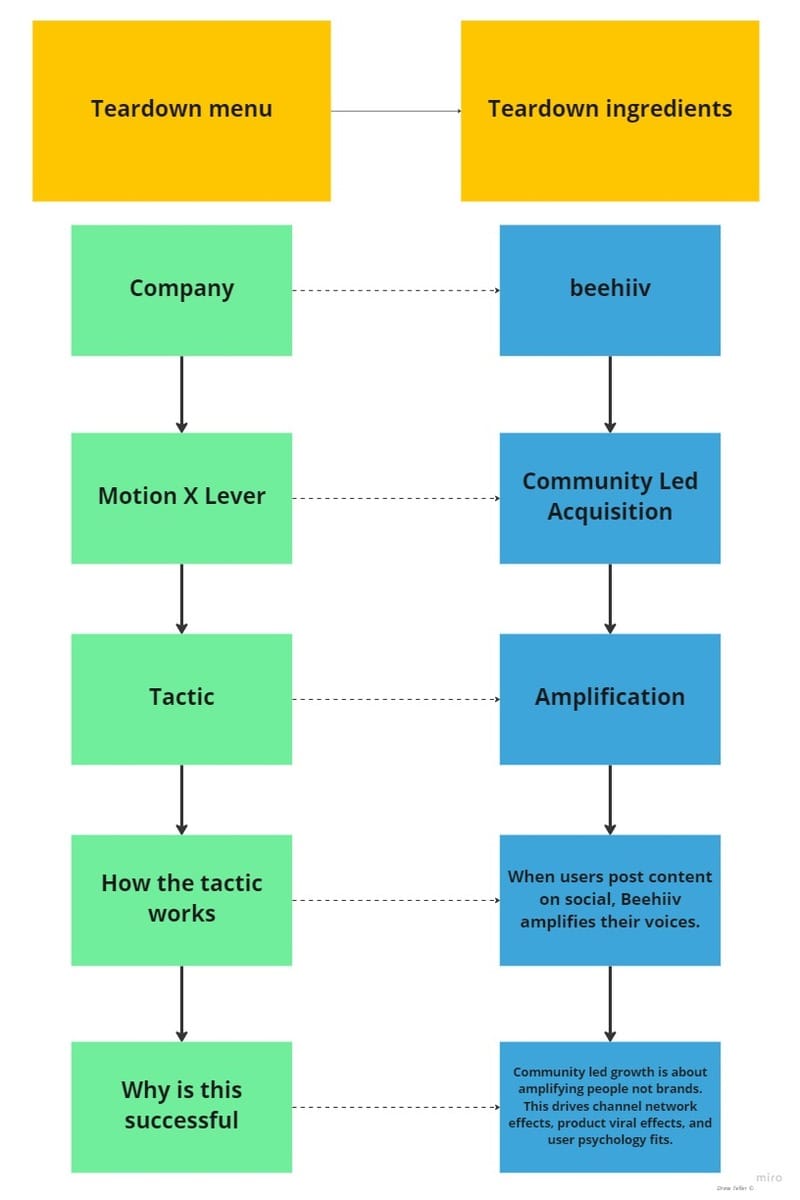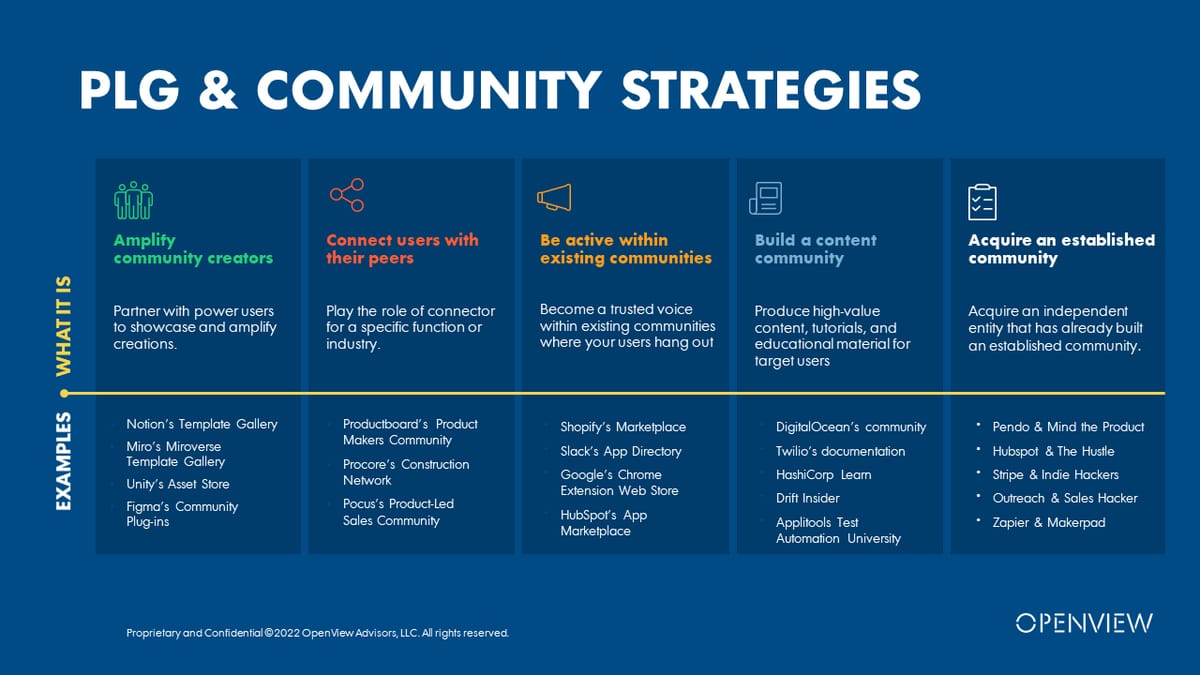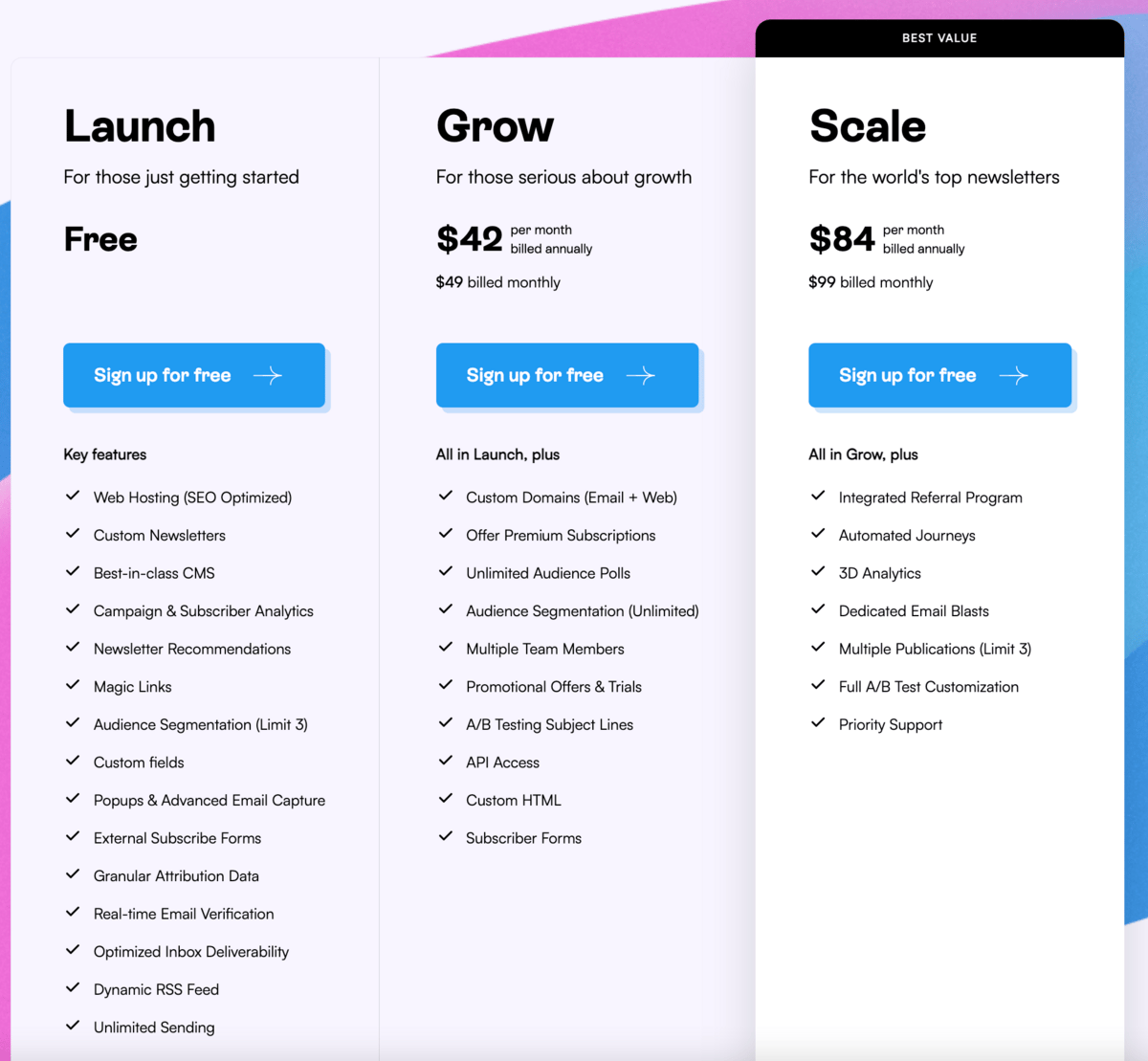Welcome to the PLG Teardown
The PLG Teardown is a special edition where I deep dive into the specifics of a growth tactic, motion, or lever of a company.
👉 In case you missed it, catch up from the last PLG Teardown on Softr.
Today's edition: beehiiv

Company: Who is beehiiv?
beehiiv is a newsletter software company that is focused on helping users create and distribute newsletters to their subscribers. They position themself as "The newsletter platform built for growth" which is no surprise as they have an easy-to-use onboarding experience and a range of powerful features such as analytics, email automation, and a built-in referral network.
They do not take a cut of their user's paid subscription payments either. Watch out Substack, there is a new player on the market 🌶️.
My newsletter is built on beehiiv.
In their first year, they have ~$1M ARR and a total of 400M emails sent!
Motion x Lever: Community-led Acquisition
The beehiiv PLG strategy on today's Teardown is community-led acquisition.
Community-led is a nuanced motion in the PLG world since it can be seen as a supplement to the product-led motion or it can be seen as the product itself that is being optimized for acquisition. Nonetheless, I believe community-led is its own motion that is adjacent to product, marketing, and sales-led approaches.
The company focuses on building and engaging with its community of users to drive new user growth which is effective because it allows them to build a loyal user base that is more likely to continue using its product over time.
Tactic & How it works
The tactic that beehiiv is using to implement this strategy is amplification.
Kyle Poyar from OpenView released a community strategy guide that I like to use:
In beehiiv's case, their tactic involves amplifying the voices of users who post content on social media, in order to trigger virality and visibility for the company. By sharing user-generated content and the successes of its users through company-distributed content, beehiiv is able to create a sense of social proof and credibility that can help to attract new users.
Let's dive into the growth loop.

The loop properties are as follows:
New user signs up for beehiiv
User creates value by starting newsletter
User distributes value by sharing on social media
Accelerant: Company amplifies by distributing user content (value) by reposting
New user sees value on social
The fuel of this loop is the content users are generating. While this loop does run successfully on its own, the amplification is the key accelerant that works by leveraging the power of social media and user-generated content to distribute the value of the fuel even further.
While you are a young startup (pre-series C), it's critical to pour as many accelerants and turbo boosts as you can on newborn growth engines to identify and cement growth!
And people do rave about beehiiv.
When users share their newsletter from beehiiv on social media, it creates an opportunity for the company to amplify their voices and reach a larger audience aka bigger network effects. As more people become aware of beehiiv and its products, it can lead to even more user-generated content and further amplification.
In summary, beehiiv uses an amplified company-distributed (CD) + user-generated (UG) community-led approach to drive acquisition. #loopsnotfunnels
Why is this successful?
Community-led growth strategies are often more effective than traditional marketing approaches, as they focus on amplifying people rather than brands. Plus, community-led approaches inherently have network effects due to the user being at the center of the content vs traditional funnel marketing tactics.
I specifically like that beehiiv's amplification tactic centers on their users, not their own brand. This is super key when it comes to community-led growth. If amplification acts as the accelerant to the fuel, and the fuel is content creation from creators, then brand amplification (vs people) is an inaccurate tactic to drive community growth.
By focusing on users and engaging with the community, beehiiv is able to create a sense of belonging and connection among its users, which can be a powerful motivator for people to recommend the product to others for increased virality and network effects.
In today's creator economy, social media (and capital) is a key channel for companies looking to connect with their users and build a strong community.
But that's not all...
Bonus: Product-led Monetization strategy 💰
I couldn't resist also talking about beehiiv's crushing monetization model and how they took a PLG-first approach here. Let's dive in.
Three key PLG monetization principles that they do really well are:
✅ Freemium plan through usage gating✅ Ungating habit-forming (input) features and gating value (output) features✅ Monetize after delivering value, not before
Freemium plan through usage gating
The free plan allows unlimited emails sends, no-code website builder, analytics
The free plan also gates subscriber count, audience segmentations, and audience polling
The ungated features help users through successful onboarding, activation, and experience a habit loop (write -> publish -> share). Analytics allow for learning and equip users on how to improve early acquisition.
Gating subscriber count at 5,000 subs on the free plan and only allowing 3 audience segmentations are very generous gates. If you are at 4,999 subs, it's hard to argue away from beehiiv due to switching costs of realized growth.
Ungating habit-forming features and gating value features
Each of these value-based gated features has clear reasons why they are designed for the user after the user has experienced a habit and preliminary growth. A few value-based gated features are:
custom domains and unlimited subscribers ➡️ taking your brand one step further
A/B testing emails ➡️ experimenting for better open rates, a sign of optimization
extra team members ➡️ adding collaborators to help write your newsletter - a sign of scale
email automation and integrated referral program ➡️ premium features that take your user subscriber growth to the next level, but not after you figure out newsletter content-market fit
Monetize after delivering value
From the first two principles just described, I can clearly see beehiiv's PLG intention to monetize after a user has experienced real value. The real value in this case is simply allowing the user to write, publish, and grow a following for free.
beehiiv's built-in referral program is their bread and butter which is on their Scale plan. While community-led growth is external to the platform (aka in social networks), the referral program is an engineered designed product feature that scales their customers' user base all from one place.
This is product-led monetization.
Thanks for taking the time to stop by today!
Was this forwarded to you? Subscribe with one click.
If you're finding this newsletter valuable, please share and spread the word if you can!
See you next time.-Drew




